
Today I’m tackling a commonly misunderstood topic which we get lots of emails about: negative ease. I’m going to take you through an explanation of what it is, how to identify it in patterns, how to work with it, and finally, which Cashmerette Patterns have it so you’re in the know. Grab a cup of tea and settle in!
What is “ease” and “negative ease”?
Put simply, “ease” is the difference in size between your *body* and the *garment*. There are three types of ease:
- Positive Ease: this is when the garment is BIGGER than your body.
- Pretty much all patterns designed for woven (non-stretchy) fabrics have at least a little positive ease, because otherwise they will aggressively compress you, like a corset. At an extreme, a garment with tons of positive ease would be a mumuu or a caftan. You can immediately tell a garment has positive ease if you see it’s very flowy or swishy.
- (Practically) Zero Ease: this is when the garment is the SAME size as your body
- It will be very fitted, like a wiggle dress or fitted pencil skirt for example. If a woven pattern has zero ease at the waist and/or hip, it can be uncomfortable for curvy/plus size women to wear, because we spread out when we sit down, and the garment will then be squeezing our body.
- Negative Ease: this is when a garment is SMALLER than your body.
- You might be thinking “huh, then it won’t fit me!”. But in fact, there are lots of garments made from stretchy fabric (knit or stretch woven) which stretch to fit your body – at an extreme, think about a swimsuit. It is very common that modern patterns for knits have negative ease, and for many stretch wovens (like stretch jeans). The garment has been designed to work with the stretch of the fabric to give you a good fit. Note, there are also knit patterns that have positive ease because they’re designed to be flowy.
One thing to note is that a garment typically will have DIFFERENT amounts of ease at different spots, depending on the design: for instance, a t-shirt can have negative ease at the bust for fit, but then positive ease through the waist and hips for flow.
We often have people getting in touch to say there’s an error in their pattern because the garment appears to be smaller than their measurements. Rest assured, that’s by design!
How can I tell if a pattern has negative ease?
The way to figure out if a pattern has negative ease is to compare the Body Measurements Table (that’s the size of your body) and the Finished Garment Measurements Table (that’s the size of the garment).
If the Finished Garment Measurement is BIGGER than the Body Measurement – that’s positive ease.
If the Finished Garment Measurement is SMALLER than the Body Measurement – that’s negative ease.
Here are some examples:
- The Pembroke Dress has NEGATIVE ease at the bust and POSITIVE ease at the waist and hip. You can tell that by comparing: for instance, look at the 18 G/H. The Body Measurement is 46″ and the Finished Garment Measurement is 44 3/4″ – so it’s 3% smaller than the body. But at the waist, the Body Measurement is 40″ and the Finished Garment Measurement is 42 3/8″, so there’s 2 3/8″ of positive ease there.
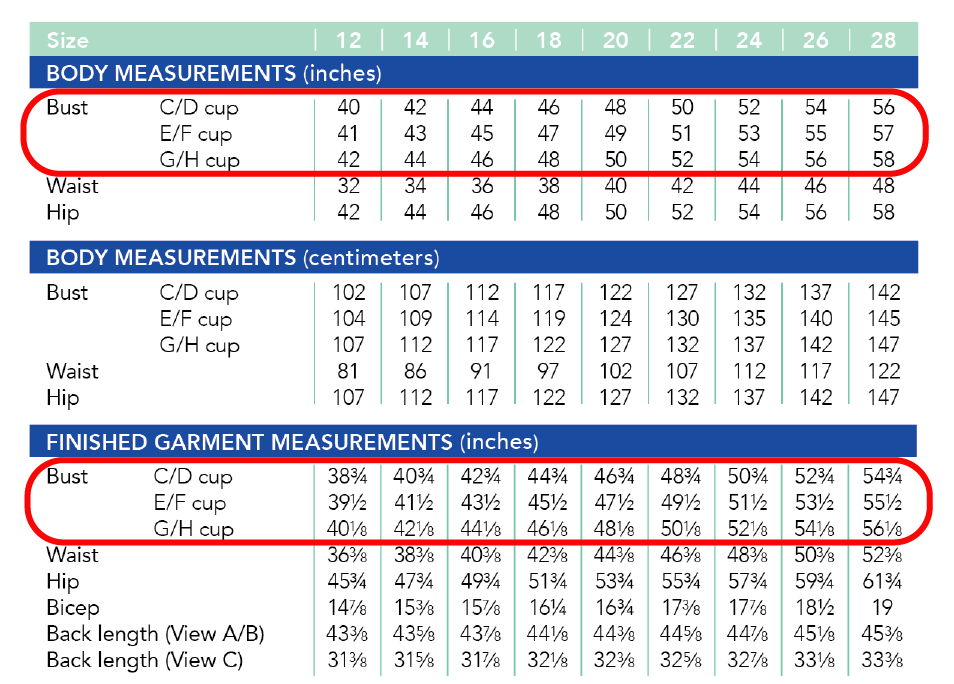

- The Webster Dress has POSITIVE ease throughout. Again, let’s look at the 18 G/H. The bust has 2 3/8″ of positive ease, the waist has 17″ and the hip has 11″ – that’s because it’s designed as a loose swing dress!
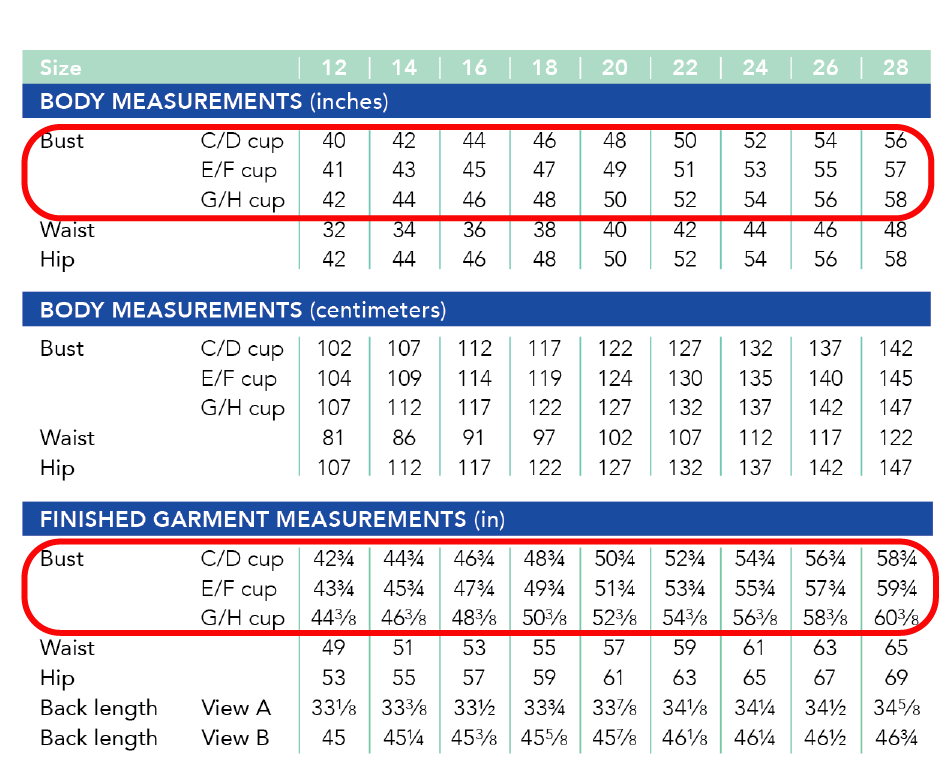

All Cashmerette Patterns have both tables available on the pattern’s page on our website, as well as on the patterns themselves (on the envelope & in the instructions). If you have a strong preference for a particular type of ease in a garment, make sure you look at this before you choose!
Are garments with negative ease always tight?
Not necessarily! There are different degrees of negative ease: a pattern like the Pembroke only has 3% negative ease at the bust, so it’s far from being tight, in fact you may barely notice that the fabric stretches. That said, some garments like a swimsuit or a leotard are intentionally tight so that they’re functional and stay firmly on your body as you move around, and don’t gape or fall off!

Cashmerette Ipswich Swimsuit: negative ease throughout, designed to be form fitting
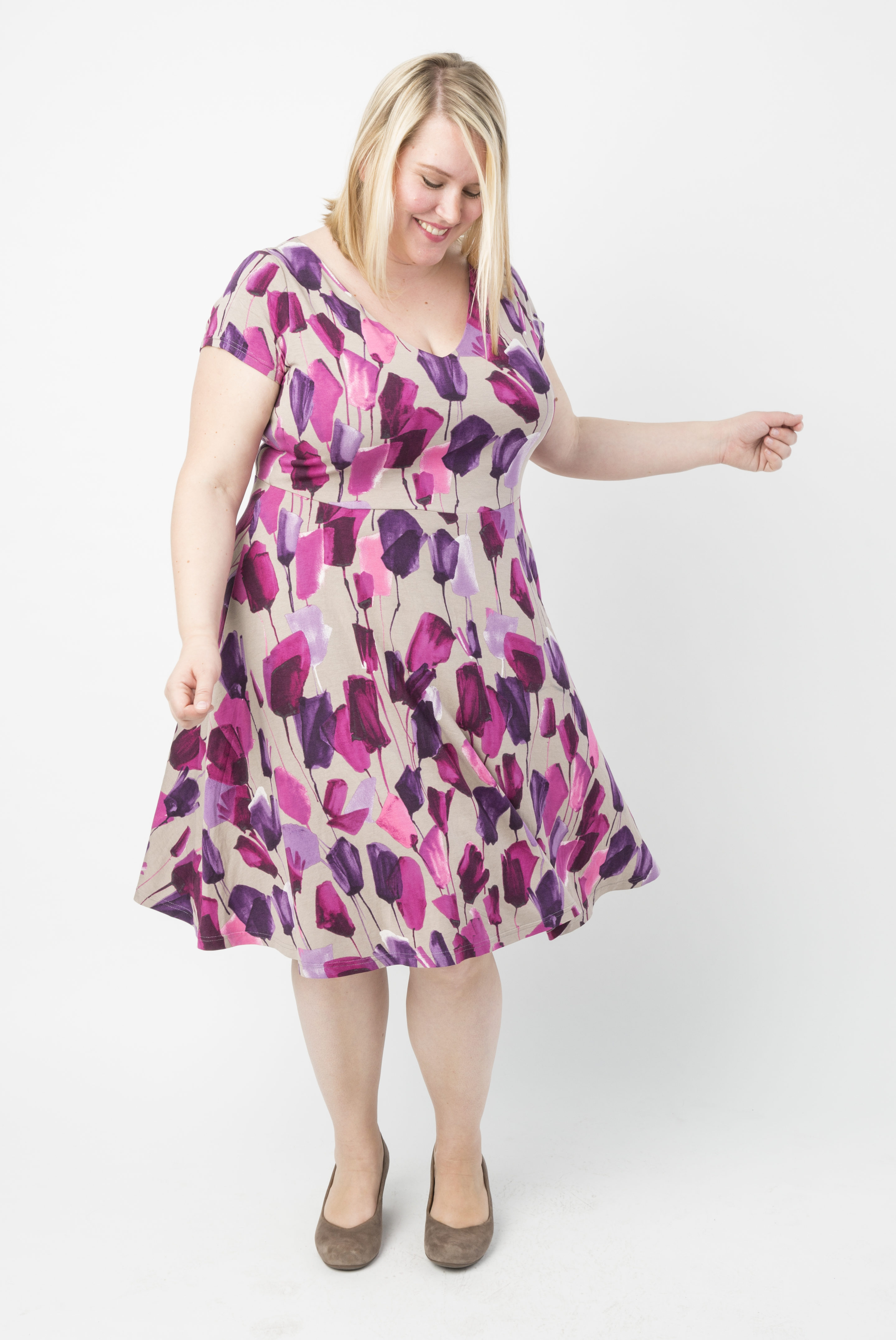
Cashmerette Turner Dress: fitted (but not tight) through the bust and waist, positive ease at the hip
Negative ease is a really fantastic tool in pattern drafting for knits and stretch wovens, and is often essential for giving a contemporary, modern look to garments – for instance, in stretch jeans or fitted t-shirts. It’s also often a great solution for women with a larger bust to get a nice fit through the shoulder, back and bust. If you measure your ready to wear clothes you may be surprised to see how many of them have negative ease!
One thing to remember is that the ABSOLUTE amount of negative ease (i.e. the number of inches) will be higher in a plus size garment than a straight size garment, because what’s key is the PERCENTAGE the fabric stretches, not the number of inches:
- For instance, 10% negative ease on a 48″ bust would be 4.8 inches. But 10% negative ease on a 30″ bust would be 3 inches.
If you’re scared by the amount of negative ease in a garment, I’d suggest always giving it a go as designed first: you may surprise yourself!
What if I’m uncomfortable with wearing garments with negative ease?
While negative ease is very common in modern clothes, you may also just not prefer that style for various reasons – fair enough! Here are some tips:
- Always check the measurements first so you know if you’re buying a positive or negative ease pattern
- Choose positive ease patterns! This is easier with wovens, but there are also lots of knit patterns available. Also, some pattern companies/brands are much more into positive vs. negative ease garments.
- Sizing up is possible, but you need to be careful – if you simply “go up a size”, you will likely find the fit is poor through the shoulder/upper body area, and the proportions may end up being off for you. If there is one area you want more ease in (for example, the waist), it’s easier to grade between sizes (here’s our handy guide!) just in that spot.
How does ease affect the fabric I can use?
This is where fabric choice becomes VERY important.
- For positive ease patterns, you have some room to change up what fabric you use. If something is designed for a woven, you can use a knit, and while it may be looser than intended and you might want to go down a size, it can still work in theory.
- For negative ease patterns you do NOT have much wiggle room in what fabric you use. If a knit is suggested with a certain stretch % you MUST use knit with at least that % or it won’t fit you. Theoretically you could re-draft the pattern for a woven but this would be a huge amount of technical work, and frankly not worth the time or effort (just find a similar woven pattern instead!).
Cashmerette Rivermont Dress: won’t work in a woven!
What type of ease do Cashmerette Patterns have?
Our patterns span a wide range – about half of them have at least partial negative ease. Note that in many cases, the ease at the bust is different to the ease at the waist & hip; I’m categorizing by bust ease below and note if there is variance between the body points. Here’s a guide:
Cashmerette Patterns with positive ease:
- Chilton Trench Coat
- Lenox Shirt Dress
- Montrose Top
- Cedar Dolman Top
- Webster Dress & Top
- Harrison Shirtdress
- Springfield Top
- Harrison Shirt
Cashmerette Patterns with close to zero ease:
- Upton Dress (positive ease at waist & hip)
Cashmerette Patterns with all negative ease:
Cashmerette Patterns with negative ease at bust, but positive at waist and/or hip:
- Appleton Dress (positive ease at waist)
- Concord T-Shirt (positive ease at waist; close to zero ease at hip)
- Rivermont Dress & Top (positive ease at waist & hip)
- Pembroke Dress & Tunic (positive ease at waist & hip)
- Turner Dress (positive ease at hip)
- Dartmouth Top (zero ease at waist & hip)
- Washington Dress (positive ease at hip)
I hope this was a helpful guide – let me know if you have any more questions on this topic, or if there’s another sewing topic you’d like to learn about!

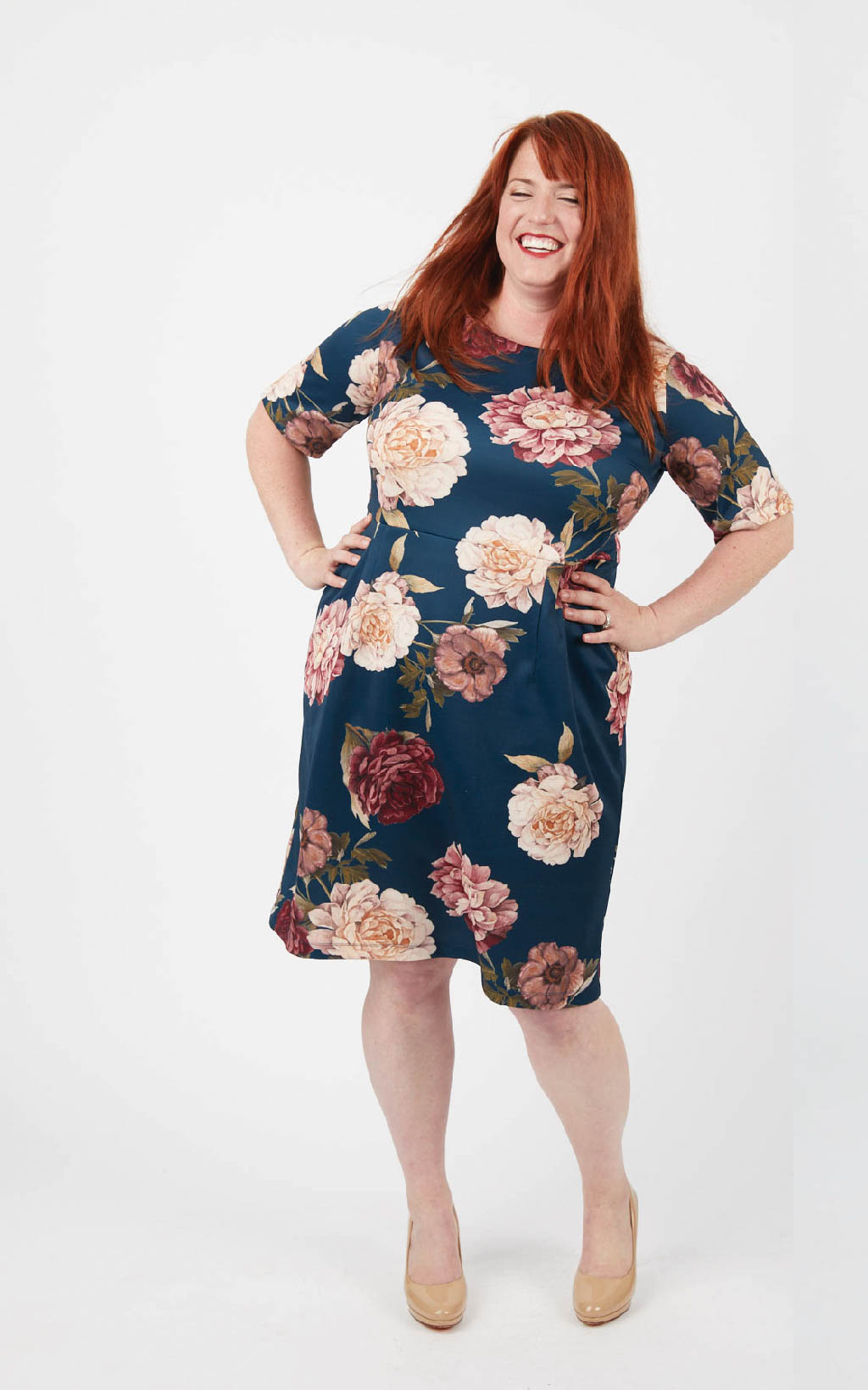

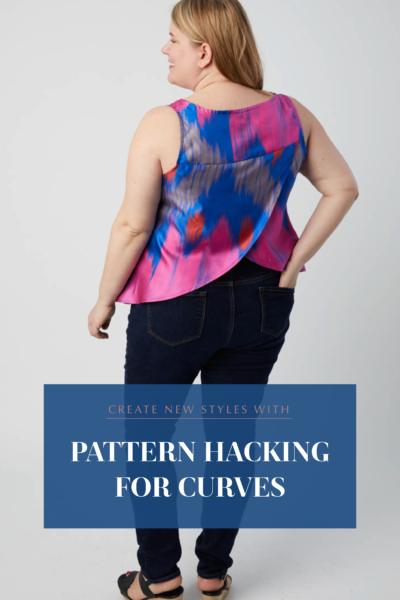
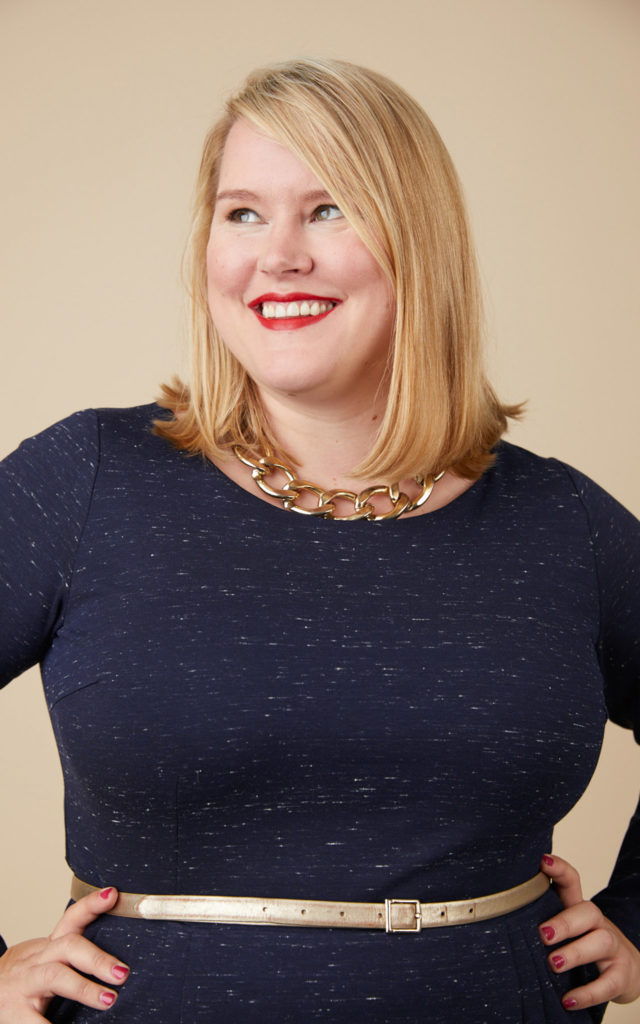
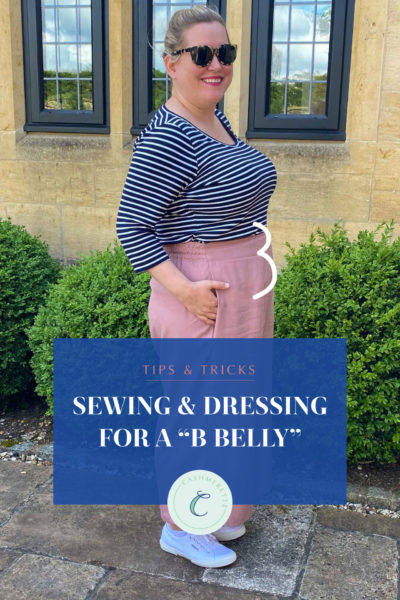
Really good. Thanks.
One thing I’ve been wondering about the Rivermont pattern (which I love) is can I make it out of a woven fabric by making it in a larger size? And if so is there a logical away to figure out what size I should try?
As I explain in this blog post, no you can’t make the Rivermont in a woven. If you do that, it won’t fit because it’s designed to work only for stretch fabrics.
Very helpful. Just trying to size myself on the first Cashmerette patters and I’m one size at bust and hips but 3+ sizes bigger at waist given my square athletic shape. Now I’m going to go back to look at the finished garment sizes to see if that helps with my size selection. Thanks. Any additional tips for my specific size challenge would be appreciated.
You’ll need to grade between sizes. You can find our comprehensive How To guide here: bit.ly/GradingBetweenSizes
Thank you for this handy overview! I have a question on the Belmont leggings: Could you tell me how much negative ease percentage the pattern is drafted for at the thighs? I know I have significantly larger thighs than usual, but am very unsure how to tell how much to adjust it in a negative-ease pattern. If I knew the intended ease, I could measure and adjust accordingly.
The Belmont Leggings are drafted with approximately 20% negative ease at the hips and thighs. If you need help with the adjusting, please email hello@cashmerette.com!
HI! I’m new to sewing and I’ve just started purchasing some knit fabric to make my first knit garments. I’m noticing that some of the coolest prints are white on the wrong side and then when they stretch white shows through the design. I’ve been really excited about the patterns, and they aren’t super cheap fabrics, but I’m wondering how this plays out with negative ease. Do you find this to be an issue or do you tend to stay away from fabrics printed on only one side? Or maybe I’m over-stretching the fabric. Just curious if it’s a regular problem. Thanks for the post!
Yes this is a common issue! If a pattern has a lot of negative ease you need to avoid these fabrics due to the “grin through” as it’s technically known. It can also be an issue with patterns that distort.
So much information! Will need to read and digest, more than 1 or more times.
Great post. Really helpful explanation about positive vs. negative ease.
Really really useful thank you so much for writing this.
I love your use of photos to explain this. I’m bookmarking this to show to clients. I have a lot of patterns from the 80s that have a lot of ease built into them, and it’s tempting to use that ease (the finished measurements) to fit to. But then you lose the style lines.
Brava!
Thanks – this is really helpful! I’m generally a bit scared of negative ease especially if hacking patterns and you’ve convinced me that it could be worth embracing it a little more 🙂
This is why I LOVE your patterns, you understand the curvy body Thank you so much for your wonderfull patterns and blogs.